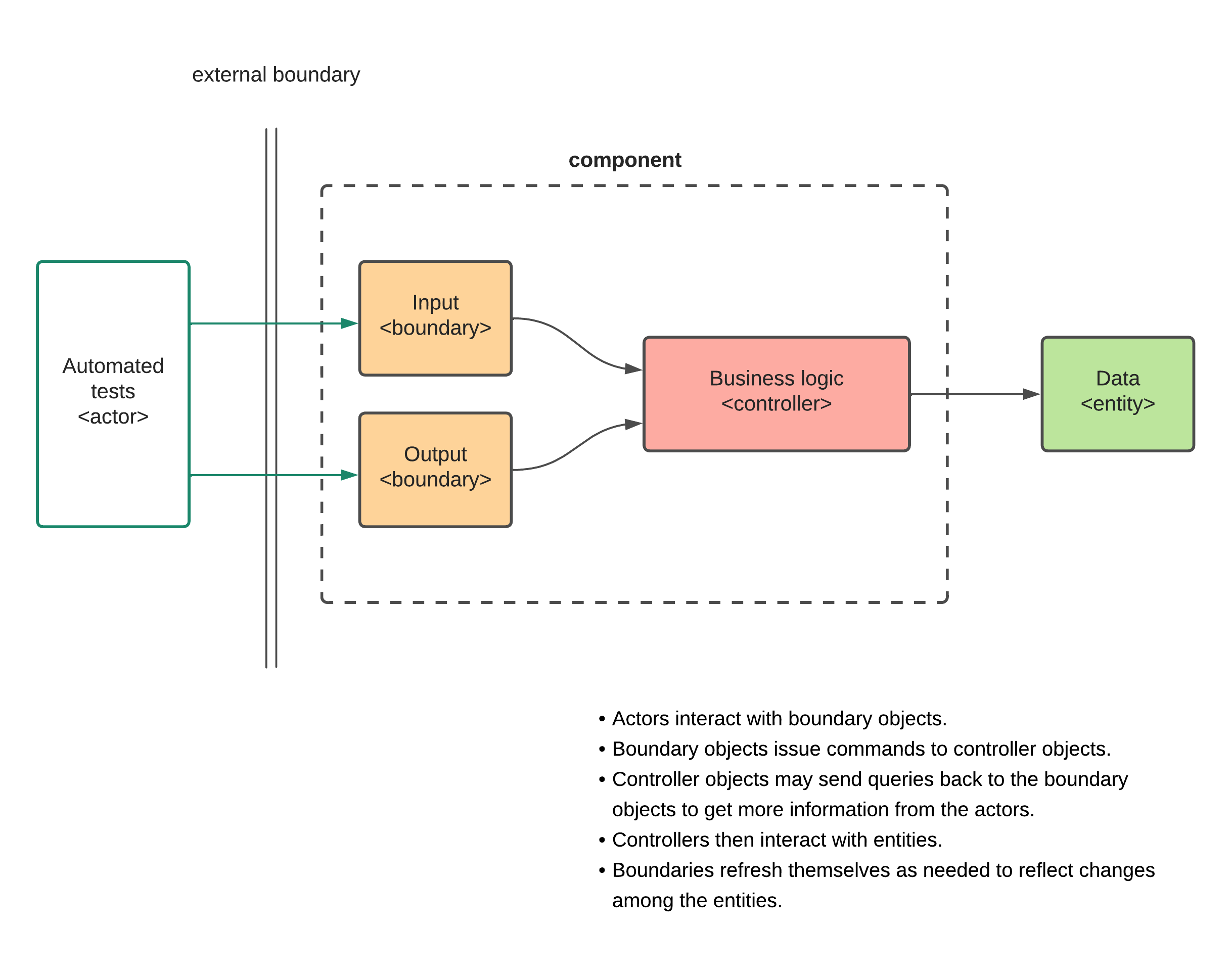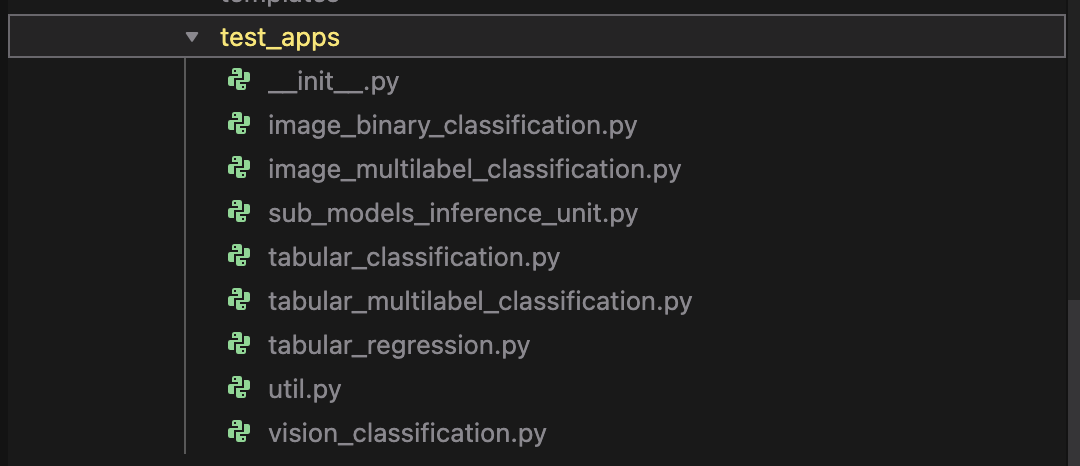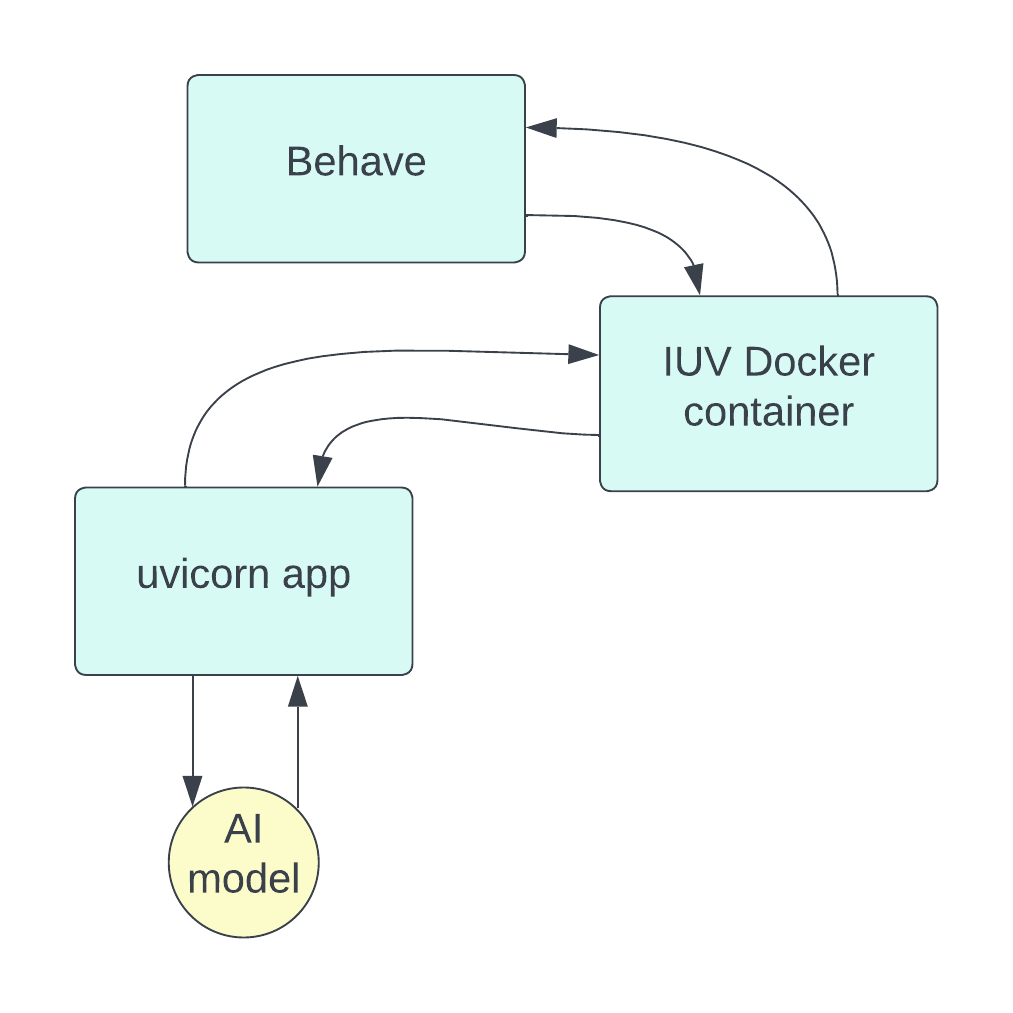Mocking
Mock the right things
We use mocking for primarily two reasons:
- speed up testing
- have a degree of immutability
With that said, we have mainly mocked things that would be time consuming to test in the cloud because of service deployment and provisioning time.
We still do integration tests, but not all the time. The mocks are there to help us go faster in local development.
Designing for testability
Building your stuff so it is testable is important. It is not always easy, but it is worth it.
Something like this:

We have several test applications

An example of the tabular regression app:
import http
import json
import pathlib
import sys
import traceback
from pydantic import ValidationError
from iu_validation.evaluation.integrations.pydantic_models import Response, Request, IUResultRegression
ROOT_DIR = str(pathlib.Path(__file__).parents[2])
sys.path.insert(0, ROOT_DIR)
import uvicorn
import argparse
import pickle
import os.path
from iu_validation.utils.util import test_models_path
from iu_validation.test_apps.util import (
read_body,
get_ping_response_context,
get_response_context_from_response,
get_validation_error_response_context,
get_exception_response_context,
get_resource_not_found_response_context,
send_response,
)
MODEL = pickle.load(open(os.path.join(test_models_path(), "tabular_regression_model.pkl"), "rb"))
MODEL_INPUT_FIELDS = [
"area",
"bedrooms",
"bathrooms",
"stories",
"guestroom",
"basement",
"parking",
"areaperbedroom",
"bbratio",
]
async def app(scope, receive, send):
path = scope["path"]
if path == "/api/ping":
response_context = get_ping_response_context()
elif path == "/api/predict":
try:
request_body = json.loads(await read_body(receive))
request = Request(**request_body)
response = predict(request)
response_context = get_response_context_from_response(response)
except ValidationError as exception:
response_context = get_validation_error_response_context(exception)
except Exception as exception:
traceback.print_exc()
response_context = get_exception_response_context(exception)
else:
response_context = get_resource_not_found_response_context(path)
await send_response(response_context, send)
def predict(request: Request) -> Response:
request_dict = request.examples[0]
model_input = [[request_dict[input_field] for input_field in MODEL_INPUT_FIELDS]]
prediction = MODEL.predict(model_input)
return Response(result=[IUResultRegression(output=str(round(prediction[0], 2)))])
if __name__ == "__main__":
argumentParser = argparse.ArgumentParser(
description="Test application for exercising tabular inference unit validation"
)
argumentParser.add_argument(
"port",
type=int,
)
arguments = argumentParser.parse_args()
uvicorn.run("tabular_regression:app", port=arguments.port, log_level="info")
Mocking it
Using Behave as orchestrator for the test runs, they call the IUV docker container, which in turn calls the mock application that behaves like a simulated real deployed AI model.
Super high-level, it looks like this:
